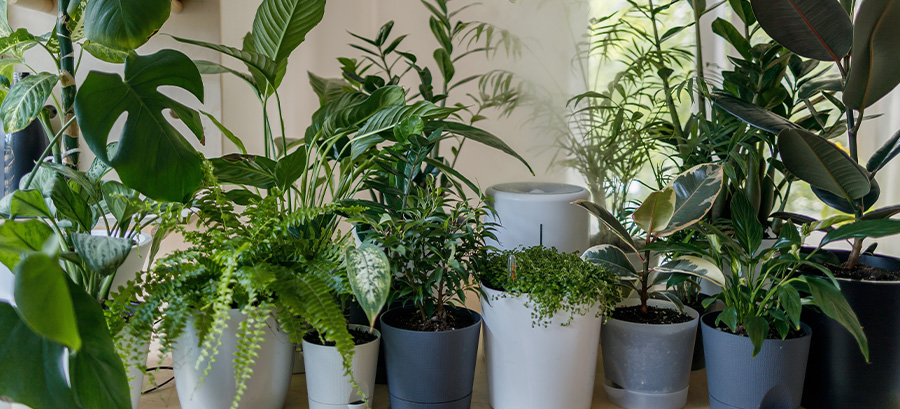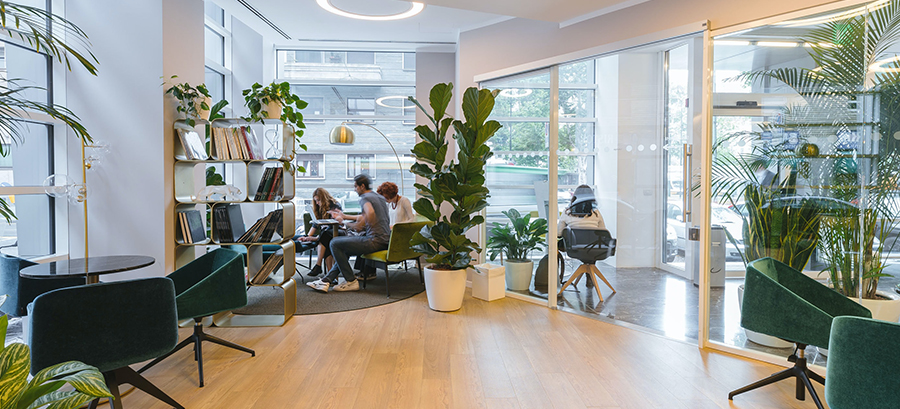The Lede:
- There is no one-size-fits-all routine when it comes to leadership (or taking care of plants)
- It takes time to understand unique leadership approaches
Throughout the pandemic, I, perhaps like you, spent just a liiiiittle extra time at home. Wanting to feel an extra sense of accomplishment, my partner and I multiplied our house plant population by about 5, and, intentionally or not, the inside of our house now looks a lot like a greenhouse.
Plant People
I (we) learned a lot about both how people feel about plants, and how to take care of them. Maybe you’ll agree with me- either plants are your best friend or worst enemy. There doesn’t seem to be an in-between. Some of us seem to be naturally gifted with a green thumb; we can grow our very own garden of Eden, while others seem to cultivate a death valley- no matter how hard they try. Plants require careful attention, strategic watering, and just the right amount of sunlight.
In taking care of these plants, I’ve learned leadership, and taking care of house plants have a lot more in common than I thought.
A skilled gardener knows the unique needs of each plant, how much sun, and how much water- even a slight fumble with one of these elements can kill a plant. The same applies to leadership. We need to understand what our people need to thrive, grow and succeed. This takes time and attention, and so does great leadership.
Here are the gardening essentials:
Good Soil:
Let’s start with the soil. I learned the hard way that healthy soil is essential for growth. It’s simple: even the best seeds can’t root in bad dirt.
We can say the same for our people: if we don’t have a healthy and safe culture and workplace, we cannot expect our people to grow and stay.
Hubert Joly recounts a simple story that completely reformed a company’s soil. One day a mother and her little boy came into a tech store with a headless dinosaur- as her son cried about the gruesome toy accident, his mother desperately pleaded with the employees to help her fix the toy. But, of course, performing a Toy Story medical operation may seem entirely out of a tech employee’s job description, right? Well, not exactly- you see, as Joly explains: “The mistake that many leaders, myself included, have made is that they lead with their brains,” he says. “But what’s at the heart of business? Well, it’s the heart. It’s people.” As a result two of these employees helped a struggling mother and her son and helped to save a toy dinosaur from extinction.
That’s healthy soil. This mindset helped Joly to grow Best Buy into what it is today. When Joly first became CEO, Best Buy’s quarterly profits had hit a nine-year low, dropping 91 percent from its former high. However, by focusing on the soil, Joly grew the company’s stock to triple in just one year.
We so often miss the obvious. Maybe our plant is dead because the soil is bad. Perhaps our employees are leaving because the values of our company don’t hold any weight—our environment matters.
Proper Environment:
As much as I would like to grow a vibrant tropical orange tree in my backyard, the fact is that the Vancouver rain and climate are unforgiving. However, if I were to move to southern Georgia, it would grow with very little help from me. Why? Because the environment matters. As Simon Sinek says, “We respond to the environments we’re in. If you get the environment right, you get the right behavior.” Unfortunately, companies often attract the wrong people who simply cannot work in their environment.
In the same way that an orange tree would produce oranges in Southern Georgia, but will die in Vancouver, Canada, we cannot assume that everyone can grow in the same environment. Someone that works well on a construction site may not work well in a hospital. This doesn’t mean that either is a bad environment, but it doesn’t mean the environment is right for everyone.
If we truly want healthy, thriving communities in our offices, we have to learn and understand our people’s climate and unique needs.
Water and Sunlight:
Have you ever noticed that when you buy a plant, there is a little tag in the soil that explains how to care for that specific plant? Some plants will die if you don’t water them; others will die if you water them too much. I could follow the same routine for cactus and an orchid, yet one of these plants would wilt and die. Why? Because even with excellent soil and an ideal environment, plants need to be maintained.
Even if we have excellent company values and immaculate work environments at the end of the day, our employees are still people who need unique doses of water and sunlight to survive. As much as we wish it- there doesn’t seem to be a secret recipe of any sort to leadership, no shortcuts; there isn’t a one size fits all approach. Have you taken the time to ask people how they like to be rewarded? How do they like to be recognized? How do they do their best work?
The best leaders understand the people they work with. Knowing your people’s unique needs is the only way to create an inclusive environment where they can thrive and grow. Perhaps water and sunlight for your people mean public recognition, maybe asking about their family, maybe private kudos out of the spotlight, and a little more flexibility. The point is that it will vary for each person on the team. The only way for you to know how to cultivate your garden is to listen to your people and see what they need to thrive. While I may not be the best gardener in the city (and yes, I’m taking far too much credit for the work my partner does to take care of our plants), I do know that the more I care for the plants in our house, the more I learn about them. The more I learn about them, the better they grow and the better our house feels. The best leaders know that if they take more time, and care a little more, their people will grow and the environment they’re all in (remotely or together in person) will be better for everyone.
More posts
Given the Pandemic, There is Currently Something More Important Than Our Company ‘Why’
Over the past months, the pandemic has dominated the headlines. Greta Thunberg and the acute…
Most of us can vividly recall the nervous feeling right before our teachers would take…
More Than Just an Office: The Potential of the Workplace of Today
“I just want things to go back to normal.” Perhaps you have either heard or…



